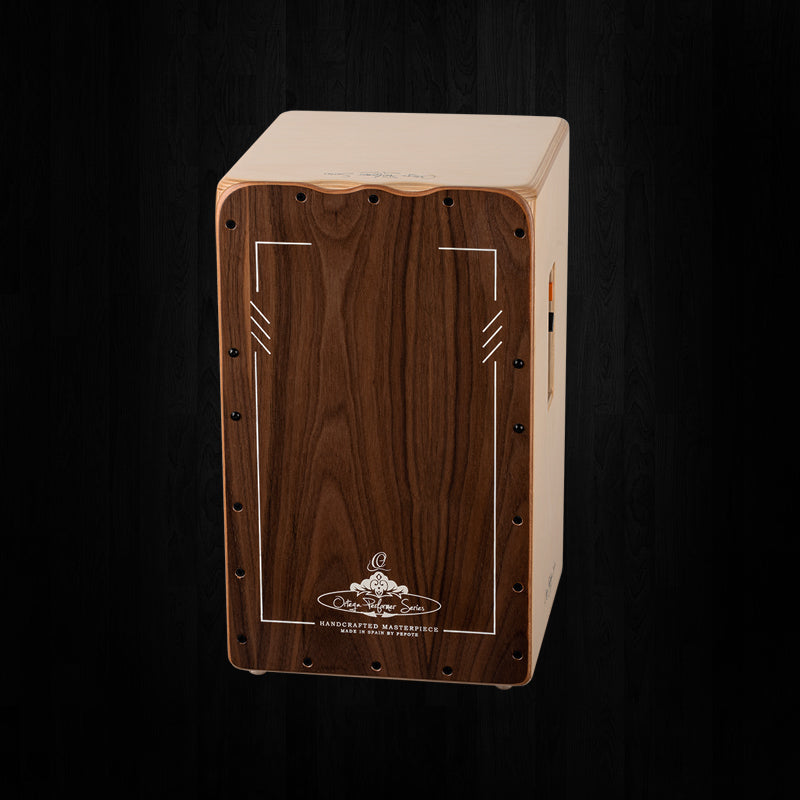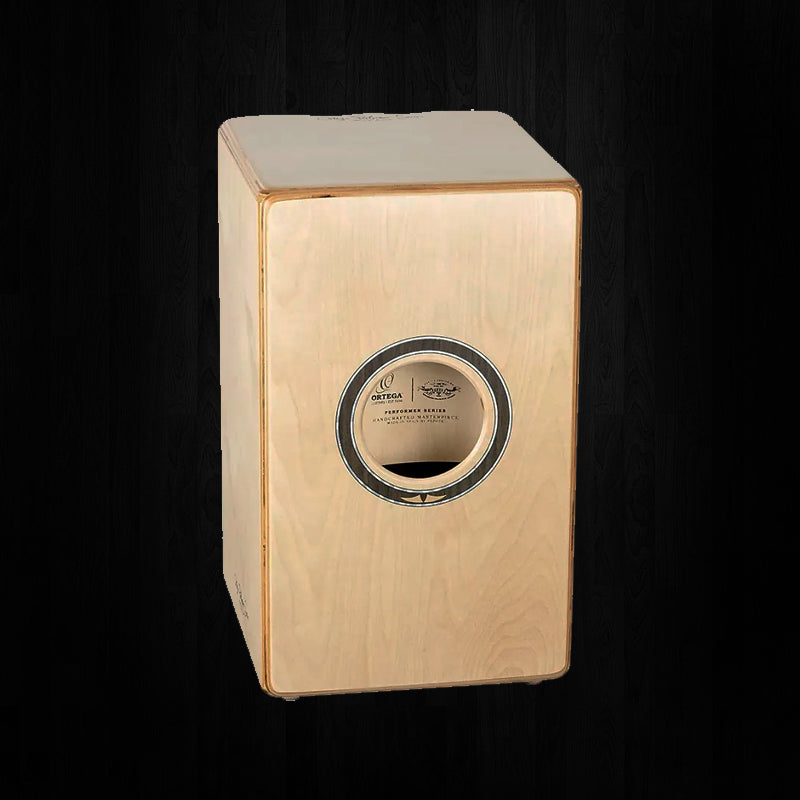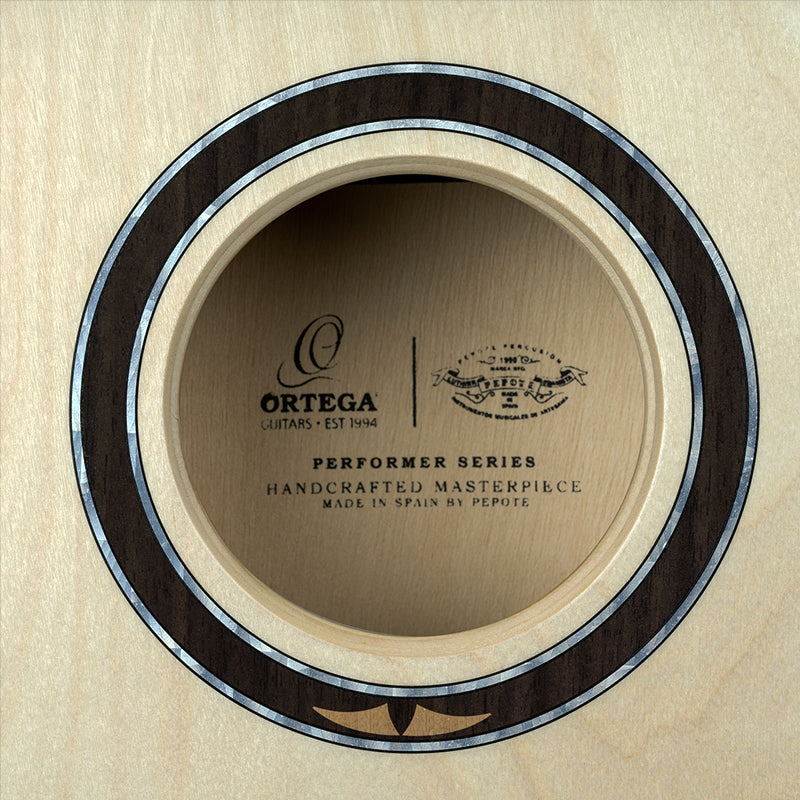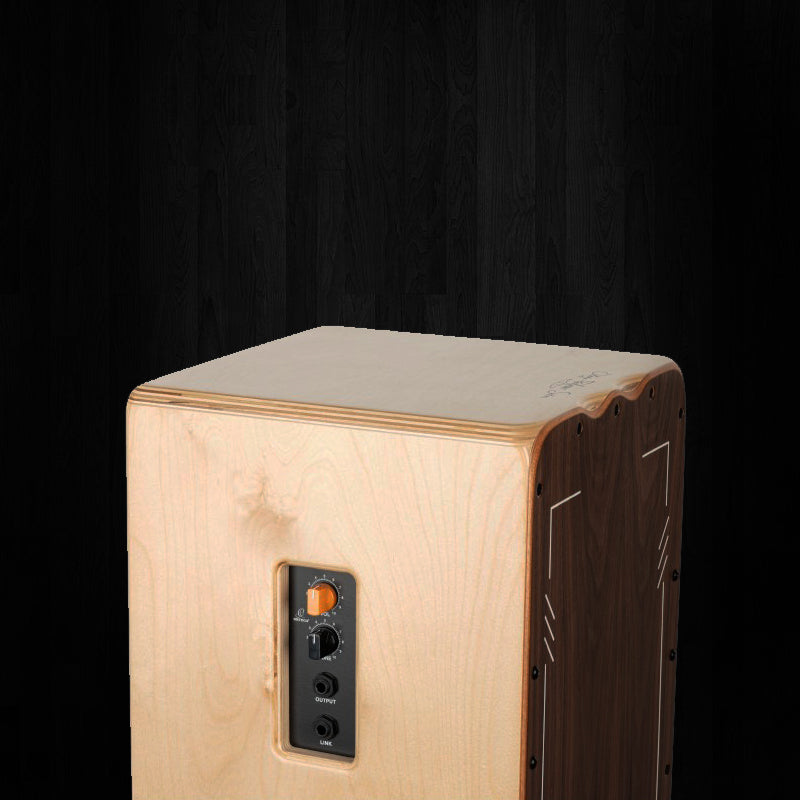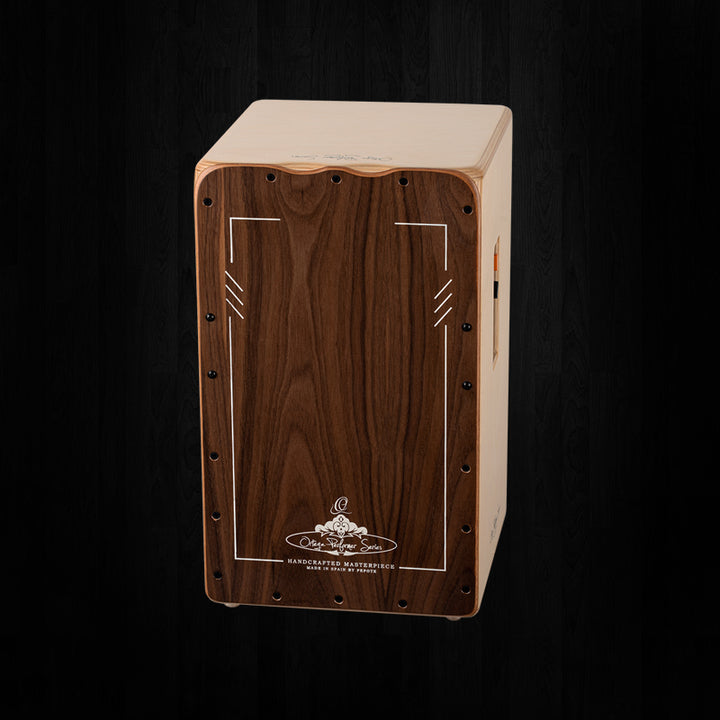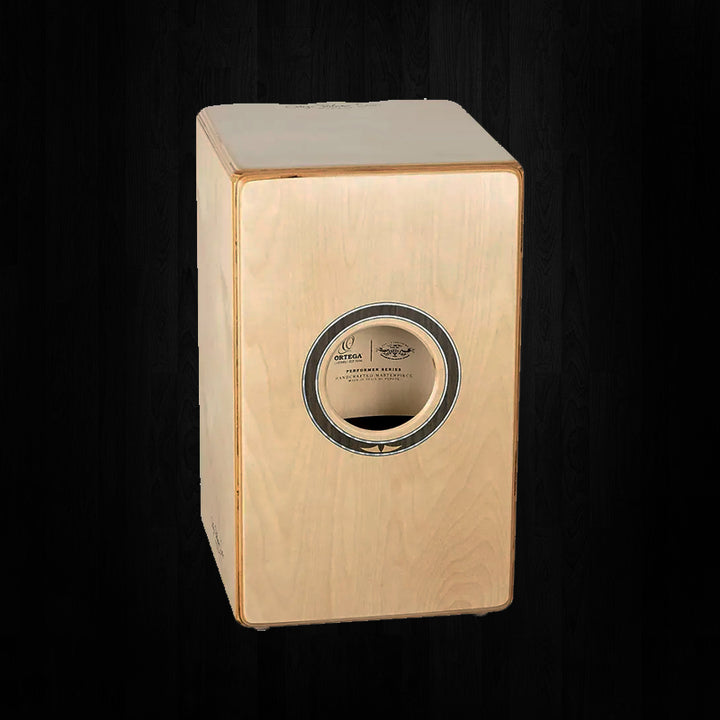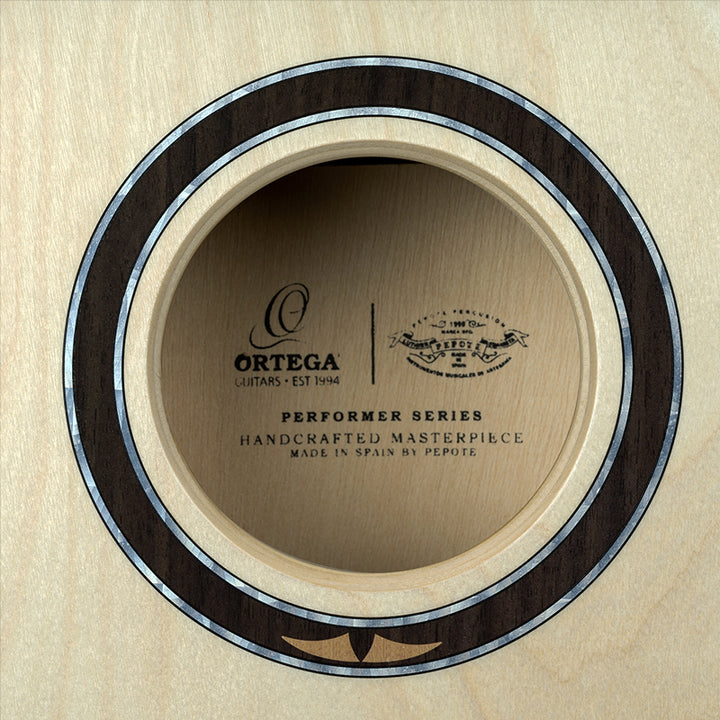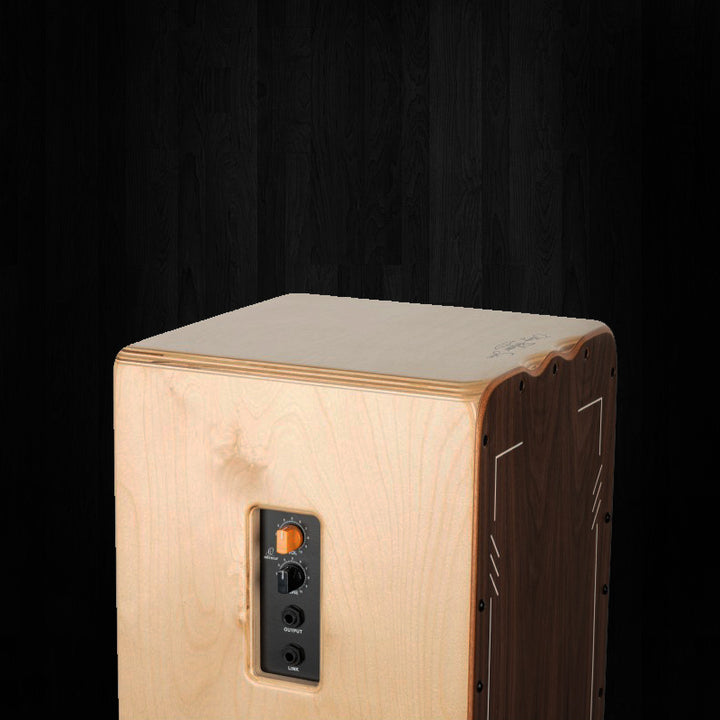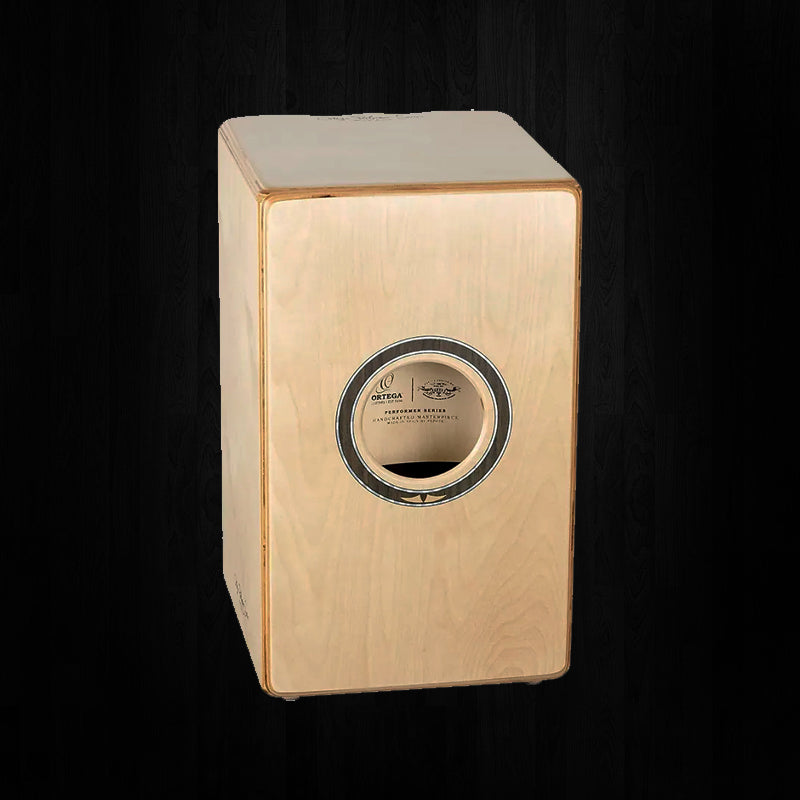Ortega CAJON OCJPF-3 Walnut/Birch
- In stock, ready to ship
- Backordered, shipping soon
Handcrafted in Spain, our new Ortega cajons feature exceptional craftsmanship and stunning looks and sound. Equipped with an internal piezo pickup and a preamp, these cajons are perfect for practicing at home, small gigs, and even big live shows. They are available in right and left-hand configurations. Ortega cajons are made of baltic birch and either a cedar front plate (OCJPF-2) or a walnut front plate (OCJPF-3).
- Walnut front plate, satin finish
- Baltic Birch resonating body, satin finish
- Piezo pickup with volume and tone control
- Rounded corners and thumb notches for optimal playing comfort and sound
- Specially formulated soft rubber feet
- Ergonomically rounded front plate with convex contact
- Link allows you to input an additional instrument, independent from volume & tone, with pass-through capability
- Output / link jack: 6.3 mm (¼")
- Made in Spain
DESIGNING AND DEVELOPING PERCUSSION INSTRUMENTS SINCE 1990
It all started in 1990 in the province of Huelva, in the south-western tip of Spain when thirteen-year-old José Hernández (Pepote) saw his first cajon. It was a live concert. World-famous virtuoso guitarist Paco de Lucia was playing, and two percussionists accompanied the flamenco music by striking at the panels of a strange looking box.
Pepote was so moved by the experience, that he went straight home, and using whatever woods he could find, and measurements he made up in his head, built his first cajon; he was hooked. The young Pepote then started to spend all of his free time progressively improving the sound of his instruments by trial and error, and very soon he was selling them to local music shops.
But Pepote still wasn’t satisfied. It became his obsession to build a cajon that would serve as a reference to all others: he enrolled at the Leon Ortega School of Art in his hometown, where his degree encompassed modules in building percussion instruments, leatherworking, lacquering and shellac varnishing. He also learnt to read and interpret music. Now, he was ready to share his instruments, first with musicians in Spain and then with cajon lovers all over the world.
Fast forward to 2020 and Pepote is a legend. His cajons are so highly regarded, they are considered the Stradivarius of the flamenco box drum: many of the world’s maestro percussionists count a Pepote amongst their collection of instruments.
Thirty years have gone by since that momentous day in 1990, but Pepote hasn’t lost any of his thirst for knowledge, despite his fame: he still sets aside a good part of his working day to investigation and development. Pepote’s insatiable quest for perfection suggests that his instruments will continue to evolve for many years to come.





